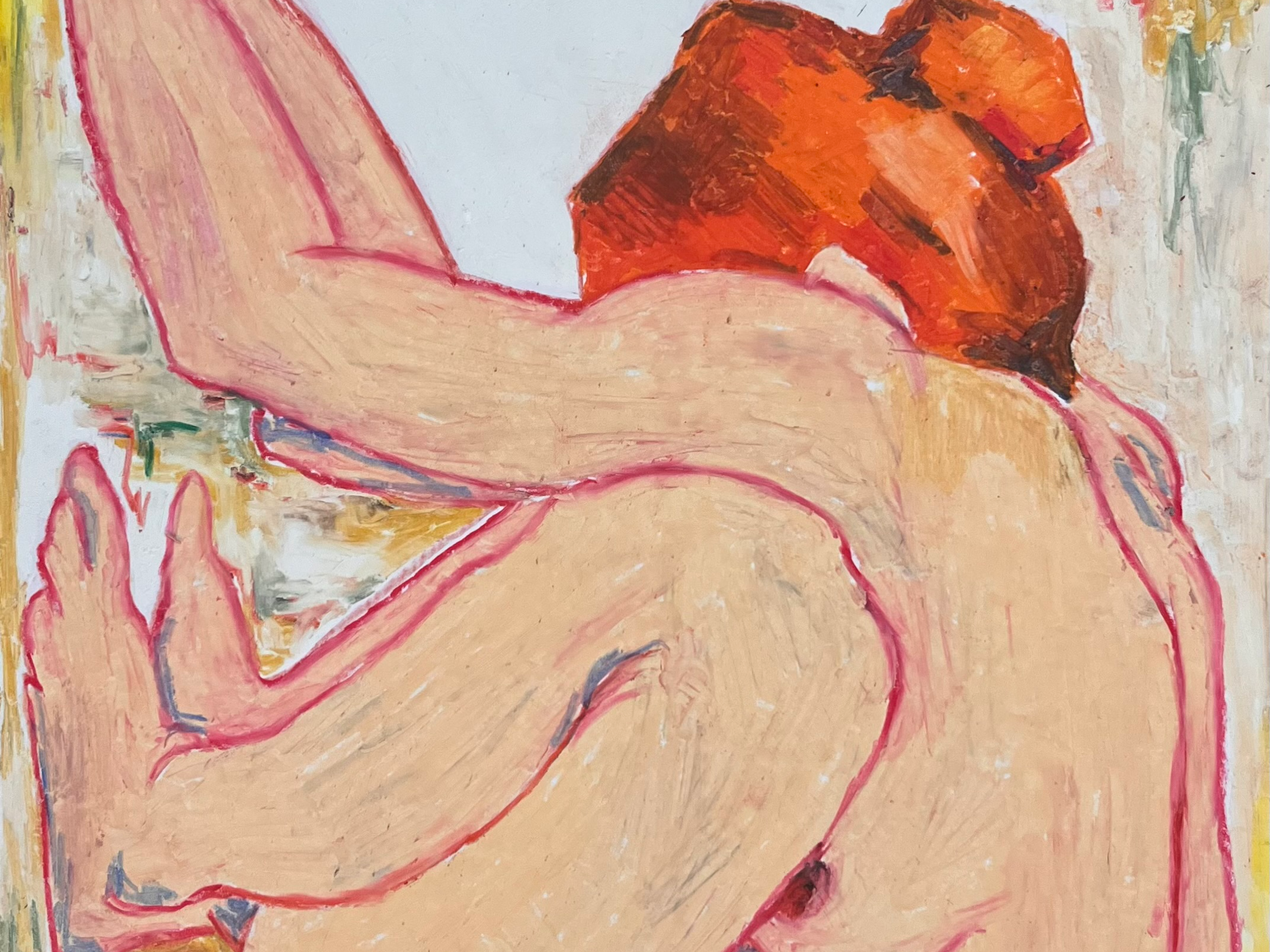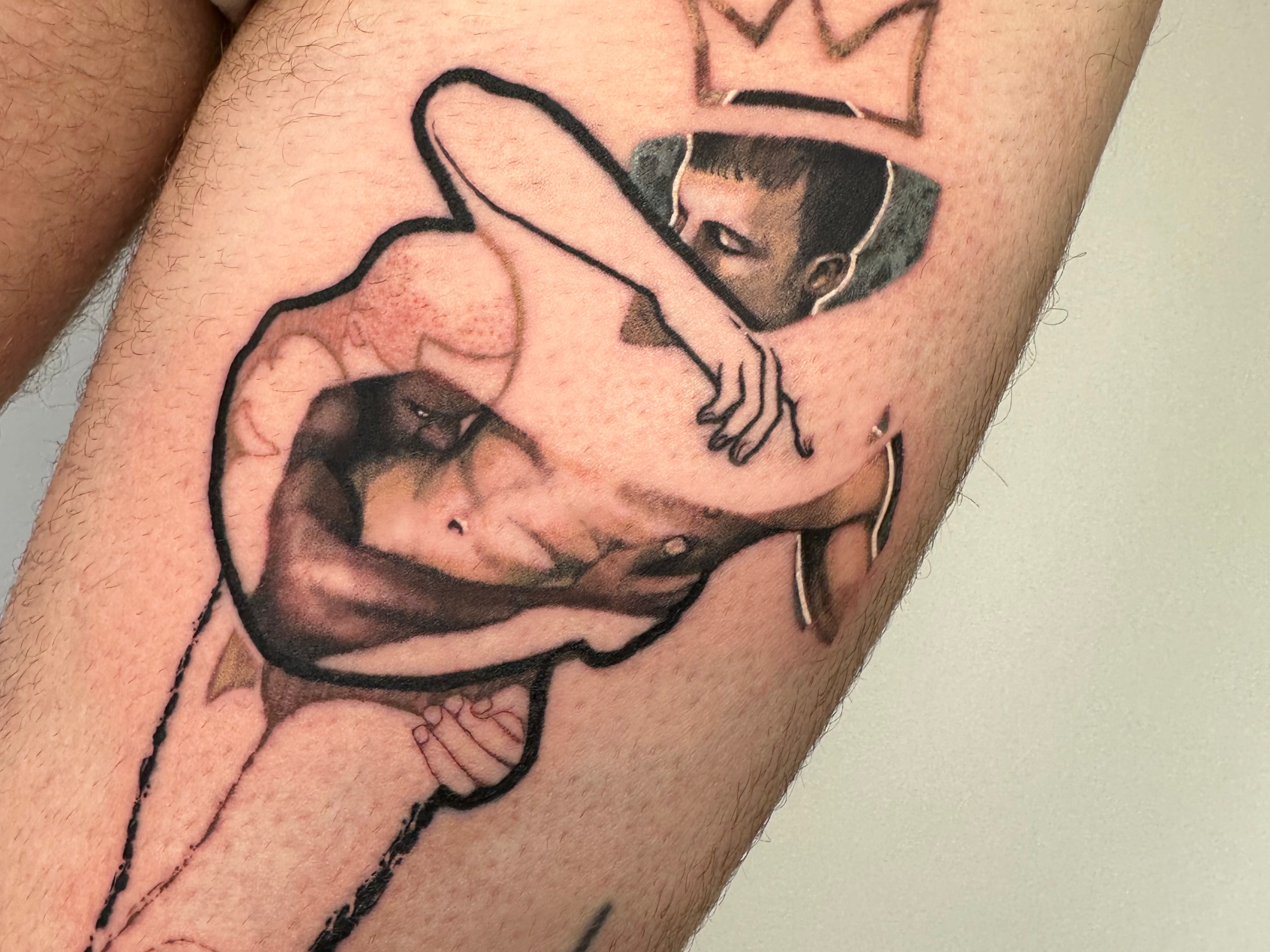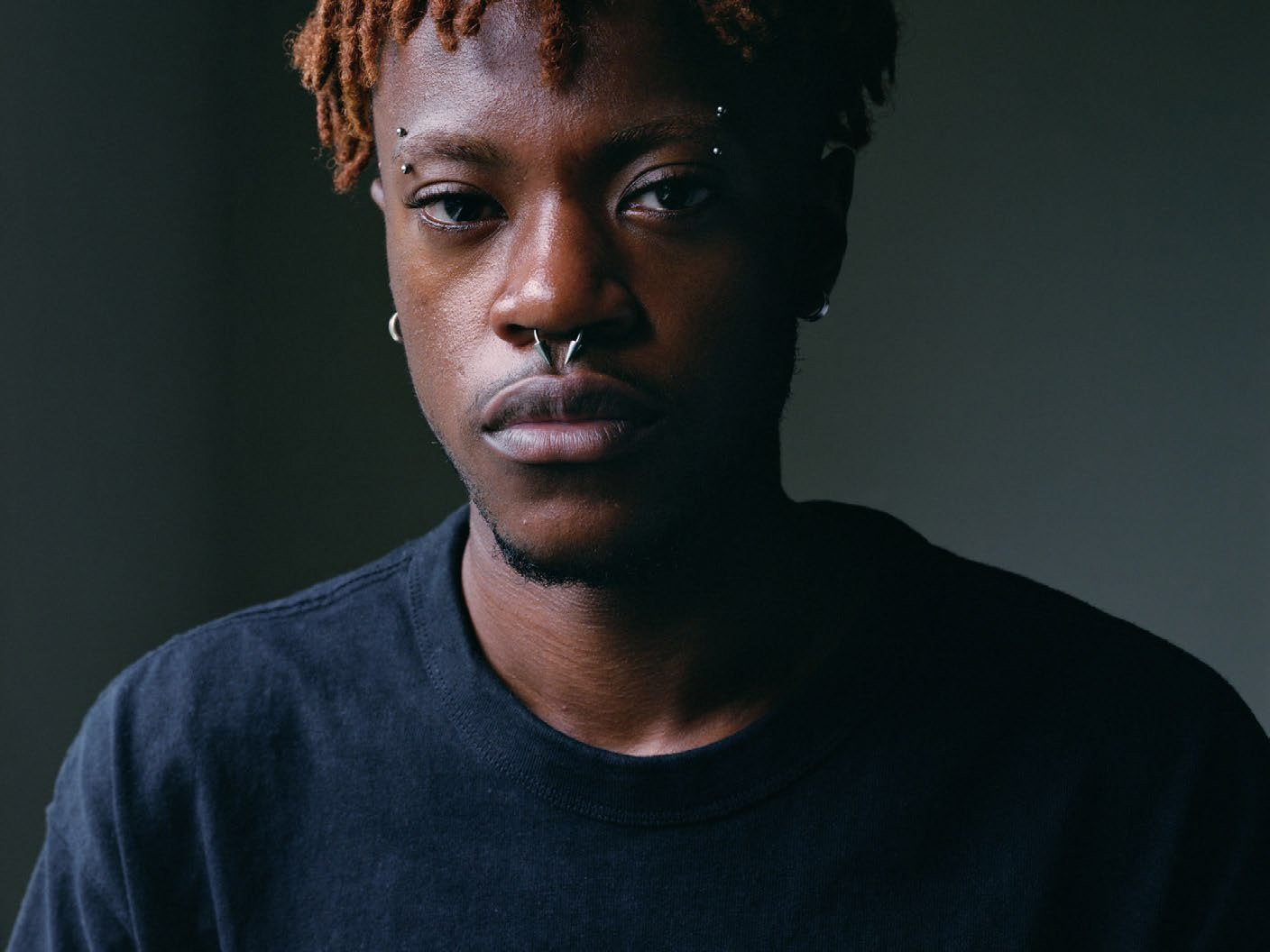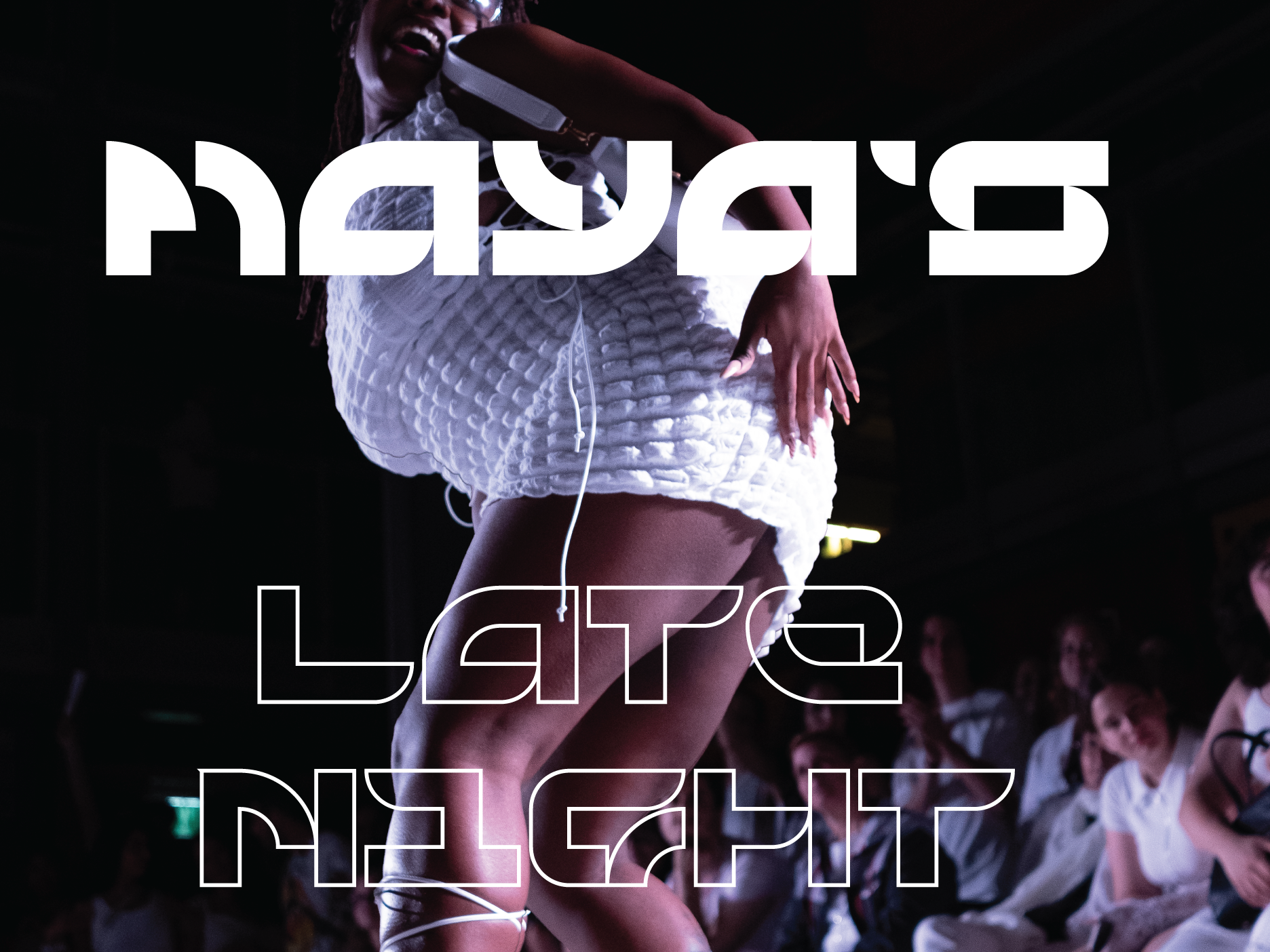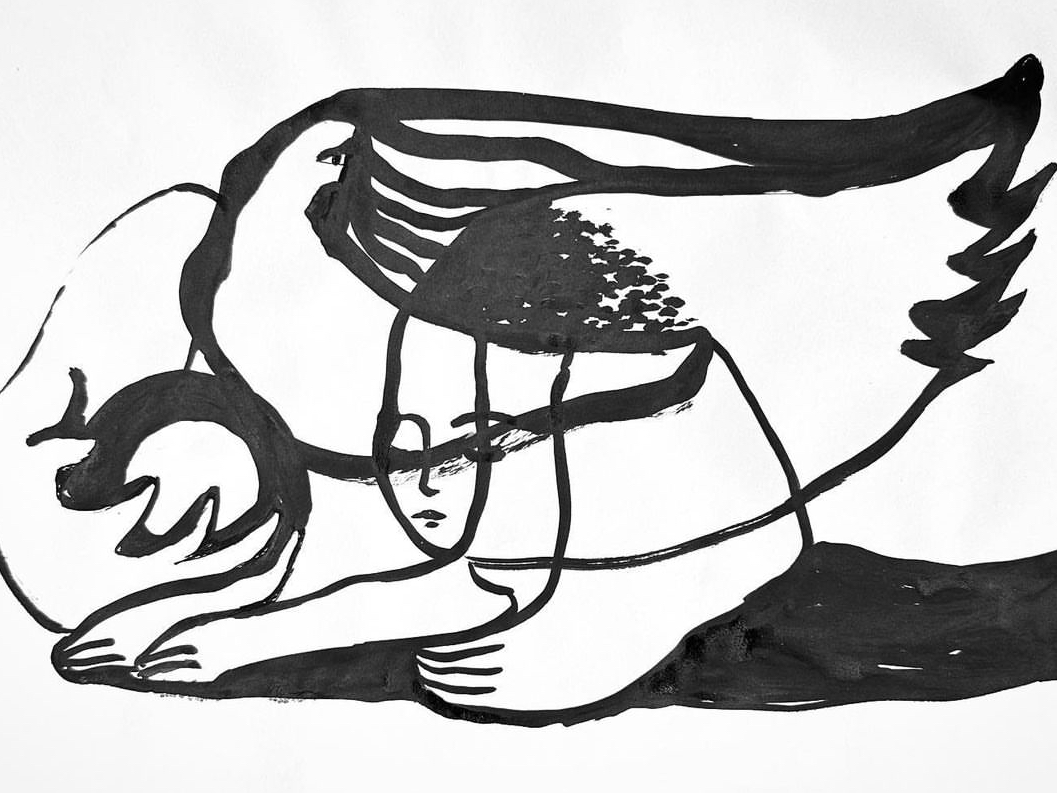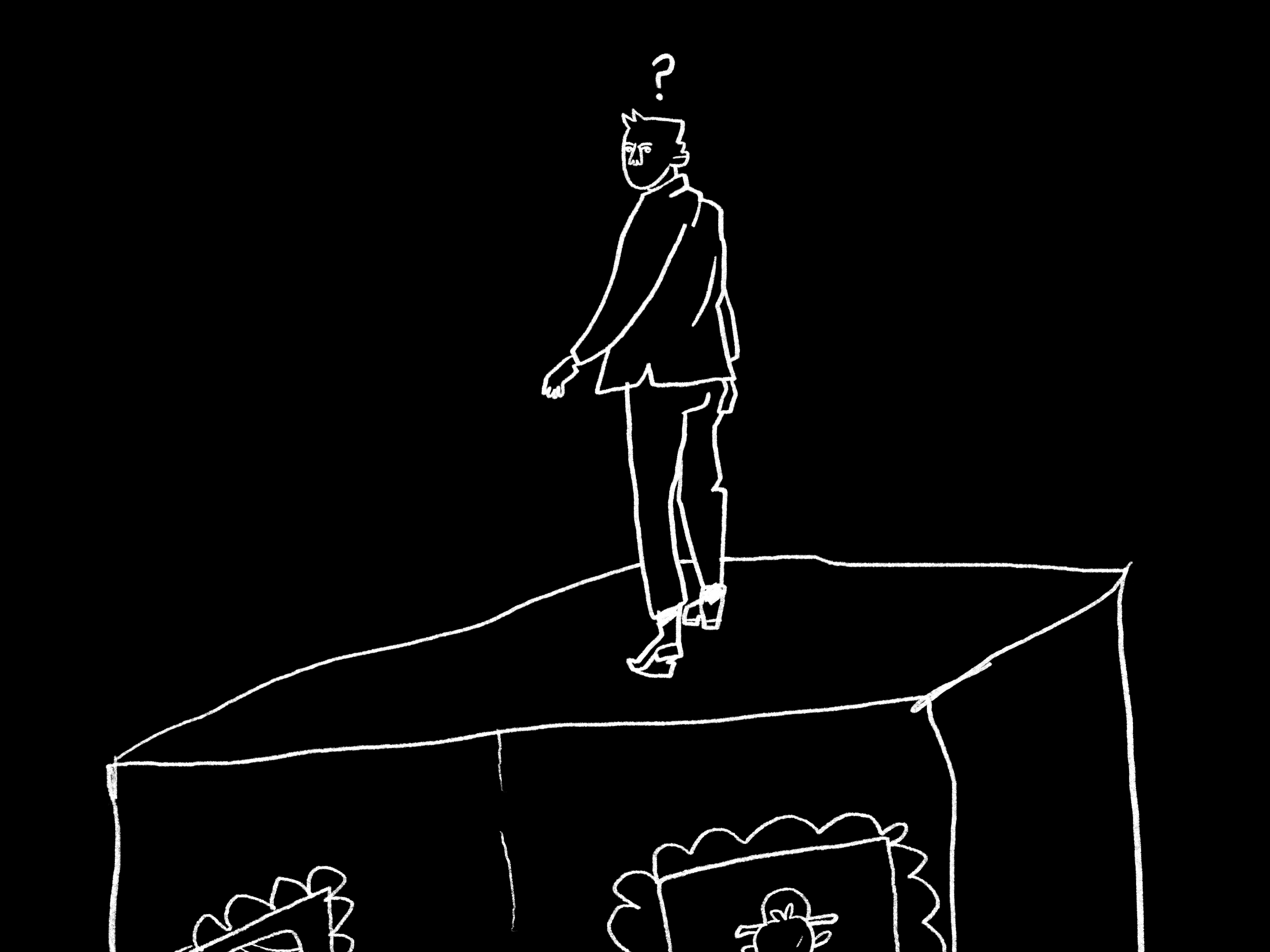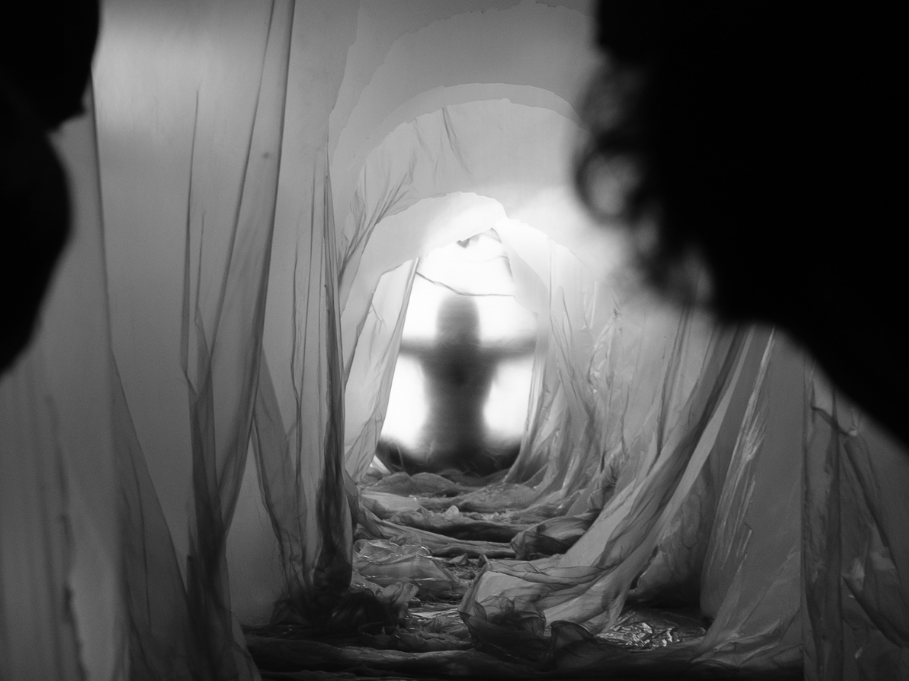New Gods
Reported by Elijah Kagan
In a small gallery, slightly off the noise and lights of the train in Old Yaffo, there exists a space where the boundaries of reality and performance blur into a scene of human emotions and societal critiques. This is the realm of Polina Liakhovitskii, known as @_polymer_ in the artistic corridors where she conjures her poignant and provocative performances. A curator and artist whose work delves into the depths of modern identity, dependency, and the stark nakedness of human connection, Polina stands as a beacon of thought-provoking creativity. As we talk, she prepares for her latest performance, "Eternity before the Night," a personal and universal exploration of the new gods of our era: substances that both isolate and embrace the human spirit.
In the reflective quietude before her performance, we are traverse the landscapes of her mind, her inspirations, and the societal echoes that resonate through her works. From the raw confrontation of "Bitter Truth" to the vulnerable intimacy of "Open Embraces", Polina crafts experiences that are not merely to be seen but to be felt, questioned, and carried away in the streams of personal reflection.
Very soon you will have a performance of “Eternity before the Flight”. Could you tell me a little about it? What is the concept based on? What inspired you?
This is a very personal story and a problem of almost any modern person. Our new religion is substance. In the past, when people had problems, they went to church, but now it’s either a pill, alcohol, or drugs, and it can relate to anything a person takes in. First and foremost, this corresponds to the conceptualism of the consumer society, and from it, faith is formed. I refer to the work of Damian Hirst, to his installation with a medicine cabinet.
But for the modern person, substances are a kind of temporary escape from reality.
You see, the problem is that we don’t quite understand where this reality is. Today, we live in both an online and offline world, we have a world of globalization, a lot of abstract things. We listen to the TV, listen to the news, and simply get lost in a huge amount of information, in these realities. And in order to calm down the daily weekday stress, to feel life, we take something into ourselves. And I draw an analogy between the previous religion of humanity - the space. Man once wanted to fly into space and find reality there, but the paradox is that though he still somehow deals with it, he gradually loses here and now. With the help of substances, we artificially feel life, and in the end, we fall deeper into the abyss, lose ourselves, and death occurs as a process of losing identity. And I am going to show exactly this metaphorical sketch, where identity is held hostage by our dependencies. It’s eternity before the flight. We would like to fly, but we are stuck in the wall.
Would you like people to perceive the experience you give differently, or is it important for them to understand a specific message that you convey, specifically in this case?
I always aim for a matryoshka doll of meanings. I give direction, in a brief annotation I talk about what I am reflecting on, but even in each performance title there is an answer - what it is about. But I want to give the viewer freedom, and if this work is ambiguous and everyone can grab onto something of interest to them, they do. For example, in the “Bitter truth” performance, people started reflecting on personal topics: how important is sex, why do I focus on it, what are my values, what is really important? Different people told me very different interpretations of what they saw, which I really liked. As for who needs to understand what the author was thinking, they can simply ask.
Regarding the “Bitter truth” performance. It is one of the last performances I was able to attend. It depicts scenes of domestic violence in a fairly crude form. What prompted you to explore this theme?
It was important to show female socialization as an image of being hostage in a patriarchal system, and despite experiencing violence, it is a typical image of a woman who sits in her kitchen and cuts onions, and for me it was important to show how the norms of this world are deformed, as if nothing had happened. The woman outwardly does not show anything, and the box I constructed around it was like some consciousness: you enter it and everything seems okay, but in reality, there is a very strong imbalance, suppression, and a sense of complete hopelessness reaching numbness in how terrible the world is, and the process is cyclical because there is no way out of the system.
How important is it for you to evoke strong emotions or any physical reactions from the audience?
For me, art is meat. It’s always something sharp. Of course, everything has its place, but for something to touch me, it has to be very ambiguous, vivid, sometimes scary. This is very important to me because I transmit emotion, social problems and for me it is important to reflect all this fucked-up degree of living through me, living through someone else. And it can’t be bland.
Regarding another performance, “Unconditional. Open Embraces”. It offers a look at human connections and isolation. How did you come up with the idea of using physical embraces as a medium, and what did you hope to convey by this act?
Hugs are both a symbol and proof of human non-loneliness. But hugs happen, and then people move away from each other. The value of a hug lies in its brevity, in that there is a moment that you can cherish because it will disappear later, because it exists now, to live it together with a person, to give a piece of yourself to each other. You give each other time and warmth. This is about how each of us is alone, but in this loneliness, we are united.
Why did you choose the color blue for body painting?
Blue is associated with loneliness for me. It is wisdom and acceptance of the discreteness of a person as such. Socially, physically, mentally, we are always alone. This color, full and deep, needs nothing.
As a curator and artist, what role do you see performance playing in Israel’s cultural landscape?
I believe there’s room for development in performance art in Israel. As someone, who considers Israel as my country and homeland, I think it’s important to promote it here. I could go to Europe, but it’s important for me to do it here. I feel there’s a need for it. Israel needs Europeanized and niche art. I’ve seen cool performances here, but I want to contribute, as if the country hasn’t fully integrated into this medium yet.
Have there been noticeable reactions or disagreements around your work in Israel?
People always react ambiguously. Usually, it’s a strong reaction, both negative and positive. Rarely is it indifferent. Sometimes people get angry. This indicates that it matters, that it carries weight. I see feedback and know I’m doing it for a reason. I’m not doing it just for myself;
Based on your recent projects, can you identify any new patterns or themes that surprised you as a performer?
I’ve studied the medium for a long time, but I’ve only recently come into contact with it, in November 2023. Initially, the idea I had was perceived one way, but when you experience it, not only does the theme unfold, but it also takes on entirely new meanings. For example, a performance with hugs became a direct embodiment of human loneliness. People later approached me and said they felt as if they were in a mausoleum, as if it were some kind of purgatory where everyone seemed close, but the atmosphere made them feel alone. Through this experience, it eventually leads to thoughts of some kind of wholeness. I hadn’t thought deeply about this.
What about curating?
It’s complex and cool. You’re carrying all the processes with you. In my last project, I had about 20 people under my guidance. But when you realize that you’re the center, the core, and you give the initial pulse, and the system moves accordingly. It surprises me that it’s not a job where you just mechanically churn things out.
As a curator, what criteria do you use to select works or artists?
Usually, when I meet an artist, I first get to know the person. I like getting to know their art through their personality and building not just parallels, but connections. For me, each curatorial work is a story about one person’s life as an artist. In terms of creativity, it’s my exposure, it’s my taste. If I don’t like the art, then I simply won’t work with them, no matter how unusual the person may be. But if the two align, if I find the person fascinating to study, if we have lengthy discussions not only about art, but also about the philosophy of life and their path,it’s worth it. I always look for new faces and identities.
What does “new” mean?
It’s probably a lot of reworked old stuff embodied in a constructive form. The same with abstract expressionism, how many times have we seen it? But if a person has their own style, their own symbolism, and aesthetics, then of course, that’s worthy of respect. If a person’s history is traceable and they can explain it.
Are there any themes or issues that you’re currently interested in exploring?
I enjoy studying children’s creativity. I’ve already curated a solo exhibition for an eight-year-old boy. He’s incredibly talented. He has his own set of characters participating in his works, and that’s so valuable. Great talents are quite easy to notice and invite.I'm also very interested in studying mental illnesses. How does the creativity of people with mental deviations differ in the degrees of their regression, for example?How does a person create in the dopamine pit and when they are at their peak, what do they do? I'm interested in tracing this moment of transition as an academic study, how it happens, what it depends on, and which parts of the brain are working. That is, to identify a pattern between the creator and their disorder, how it changes over time and in different phases and conditions. I also enjoy exploring feminism from the perspective of transitioning from a patriarchal system to a freer system. Women are no longer suppressed. And of course, AI. We've all started using it , but perhaps it already deserves a central place. It's interesting to explore transitional moments in society, what we breathe.
Performance itself often blurs the line between the artist and the work of art. How do you prepare yourself morally and physically for such blurred identities?
I have a therapist, and engaging in performance is certainly a certain way of life. To prepare for performances, you need to maintain yourself in good physical shape, constantly run, engage in sports, meditate, stretch, think through everything to the smallest detail, create tables, purchase everything, set up, that is, to be maximally involved in the process. And of course, I give part of my identity in the process. Moments of derealization happen very often, I can't come to myself for a long time, and Polina loses its meaning, I'm in nowhere. It's some kind of shamanism that depersonalizes me to the maximum. A very interesting condition, but it's also cool to come out of it. And accordingly, these are some psychological practices, how to get out of derealization, and dissociation from space.
Could you share sources of inspiration or artists who have influenced your approach to performance?
Aesthetically, my series of performances "Thoughts at the Table" is, of course, the director John Waters, who explored the boundaries of social norms through maximal kitsch, kitschy/culture, and socially forbidden. Of course, David Lynch and his crazy women, people who go crazy, whose houses explode, dream within a dream of a dream, parallel realities. From performers, I like Viennese Actionism. Of course, Marina Abramovic and her endurance performance.
And of course the limits of the human body. A person is a psychophysical being, and I like to work out emotional things through physical beginnings. Russian performers of the 2000s, Andrey Kuskin, Mavromati. After his performance "I'm not the Son of God," he was expelled from Russia, he moved to Bulgaria and continued his activities there, things between life and death. And I like the philosophy of existentialism, Sartre, Baudelaire with decadence. "Flowers of Evil" is my bedside book. The aesthetics of death, decomposition, death as a process, utopia, I really like to explore all this through myself.
How do you get ideas for your own performances? Where does it come from in your mind?
It's always a nested doll construction, personal history, popular culture, what's happening now, what worries me, what worries other people. The situation with the bitter truth. I experienced a moment of harassment then, and two friends shared with me a story of violence. I was completely immersed in this topic, studied it. And once I was visiting my friend, and there was an onion on his table that seemed very photogenic to me. I took a picture of it. He asked me if I had come up with a new performance and began to kiss me. I wasn't ready for that. And I thought, the onion because of crying, and I start to absolve and be inactive, feeling like a hostage of the patriarchal system, and this is the bitter truth in which I confess to no one.
People who see your work, who are inspired by what you do, people who would like to engage in performance art, what advice would you give them?
Don't engage in performance art.
Polina Liakhovitskii does not merely create art; she ignites dialogues, challenges perceptions, and offers a mirror to the very soul of our cultural existence. Her call to the audience is clear: to engage, reflect, and perhaps, transform. In the realm of @_polymer_, art is an eternal flight, ever poised between the gravity of our reality and the weightlessness of what we might become.
New Gods was originally published in June 2024 as part of UNHiNGED #3, Rebirth Reborn. The full edition is available for physical or digital download on our store.

